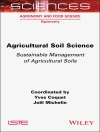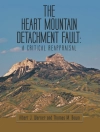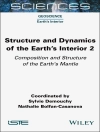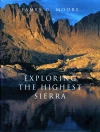The US Antarctic meteorite collection exists due to a cooperative program involving the National Science Foundation (NSF), the National Aeronautics and Space Administration (NASA), and the Smithsonian Institution. Since 1976, meteorites have been collected by a NSF-funded field team, shipped for curation, characterization, distribution, and storage at NASA, and classified and stored for long term at the Smithsonian. It is the largest collection in the world with many significant samples including lunar, martian, many interesting chondrites and achondrites, and even several unusual one-of-a-kind meteorites from as yet unidentified parent bodies. Many Antarctic meteorites have helped to define new meteorite groups.
No previous formal publication has covered the entire collection, and an overall summary of its impact and significant samples has been lacking. In addition, available statistics for the collection are out of date and need to be updated for the use of the community. 35 seasons of U.S. Antarctic Meteorites (1976-2011): A Pictorial Guide to the Collection is the first comprehensive volume that portrays the most updated key significant meteoritic samples from Antarctica.
35 seasons of U.S. Antarctic Meteorites presents a broad overview of the program and collection nearly four decades after its beginnings. The collection has been a consistent and reliable source of astromaterials for a large, diverse, and active scientific community.
Volume highlights include:
* Overview of the history, field practices, curation approaches
* Special focus on specific meteorite types and the impact of the collection on understanding these groups (primitive chondrites, differentiated meteorites, lunar and martian meteorites)
* Role of Antarctic meteorites in influencing the determination of space and terrestrial exposure ages for meteorites
* Statistical summary of the collection by year, region, meteorite type, as well as a comparison to modern falls and hot desert finds
* The central portion of the book features 80 color plates each of which highlights more influential and interesting samples from the collection.
35 seasons of U.S. Antarctic Meteorites would be of special interest to a multidisciplinary audience in meteoritics, including advanced graduate students and geoscientists specializing in mineralogy, petrology, geochemistry, astronomy, near-earth object science, astrophysics, and astrobiology.
Table des matières
Preface v
Contributors vii
1 The Origin and Early History of the U.S. Antarctic Search for Meteorites Program (ANSMET) 1
Ursula B. Marvin
2 Fieldwork Methods of the U.S. Antarctic Search for Meteorites Program 23
Ralph P. Harvey, John Schutt, and Jim Karner
3 Curation and Allocation of Samples in the U.S. Antarctic Meteorite Collection 43
Kevin Righter, Cecilia E. Satterwhite, Kathleen M. Mc Bride, Catherine M. Corrigan, and Linda C. Welzenbach
Pictorial Guide to Selected Meteorites
4 Primitive Asteroids: Expanding the Range of Known Primitive Materials 65
Michael K. Weisberg and Kevin Righter
5 Achondrites and Irons: Products of Magmatism on Strongly Heated Asteroids 79
David W. Mittlefehldt and Timothy J. Mc Coy
6 ANSMET Meteorites from the Moon 101
Randy L. Korotev and Ryan A. Zeigler
7 Meteorites from Mars, via Antarctica 131
Harry Y. Mc Sween, Jr., Ralph P. Harvey, and Catherine M. Corrigan
8 Meteorite Misfits: Fuzzy Clues to Solar System Processes 145
Timothy J. Mc Coy
9 Cosmogenic Nuclides in Antarctic Meteorites 153
Gregory F. Herzog, Marc W. Caffee, and A. J. Timothy Jull
10 A Statistical Look at the U.S. Antarctic Meteorite Collection 173
Catherine M. Corrigan, Linda C. Welzenbach, Kevin Righter, Kathleen M. Mc Bride, Timothy J. Mc Coy, Ralph P. Harvey, and Cecilia E. Satterwhite
Index 189
A propos de l’auteur
Kevin Righter is a planetary scientist in the Astromaterials Research Office at NASA. His research focuses on Petrology and Geochemistry, particularly emphasizing on igneous petrology that includes applications of experimental petrology and geochemical analysis to understand both terrestrial and planetary materials. He is the author of several prestigious journal articles in geoscience, some of which are published in PNAS, Nature Geoscience and Earth & Planetary Science Letters.
Catherine (Cari) Corrigan is a Geologist in the Division of Meteorites of Mineral Sciences Department at the Smithsonian Museum of Natural History.
Timothy Mc Coy is the Department Chair, Geologist and Curator-in-Charge of the Meteorite Collection in the Mineral Sciences division of the Smithsonian Museum of Natural History. His research focuses on using meteorites as a tool to understand the origin and evolution of their parent bodies, namely asteroids and Mars. He has published in many planetary journals including the JGR Planets, Science, and Meteoritics and Planetary Science.
Ralph P. Harvey is an Associate Professor of Planetary Materials in the Department of Earth, Environmental and Planetary Sciences at Case Western Reserve University. His research focuses on Martian meteorites, micrometeorites and planetary remote sensing. He has published extensively in prestigious Earth Science journals including Nature.












